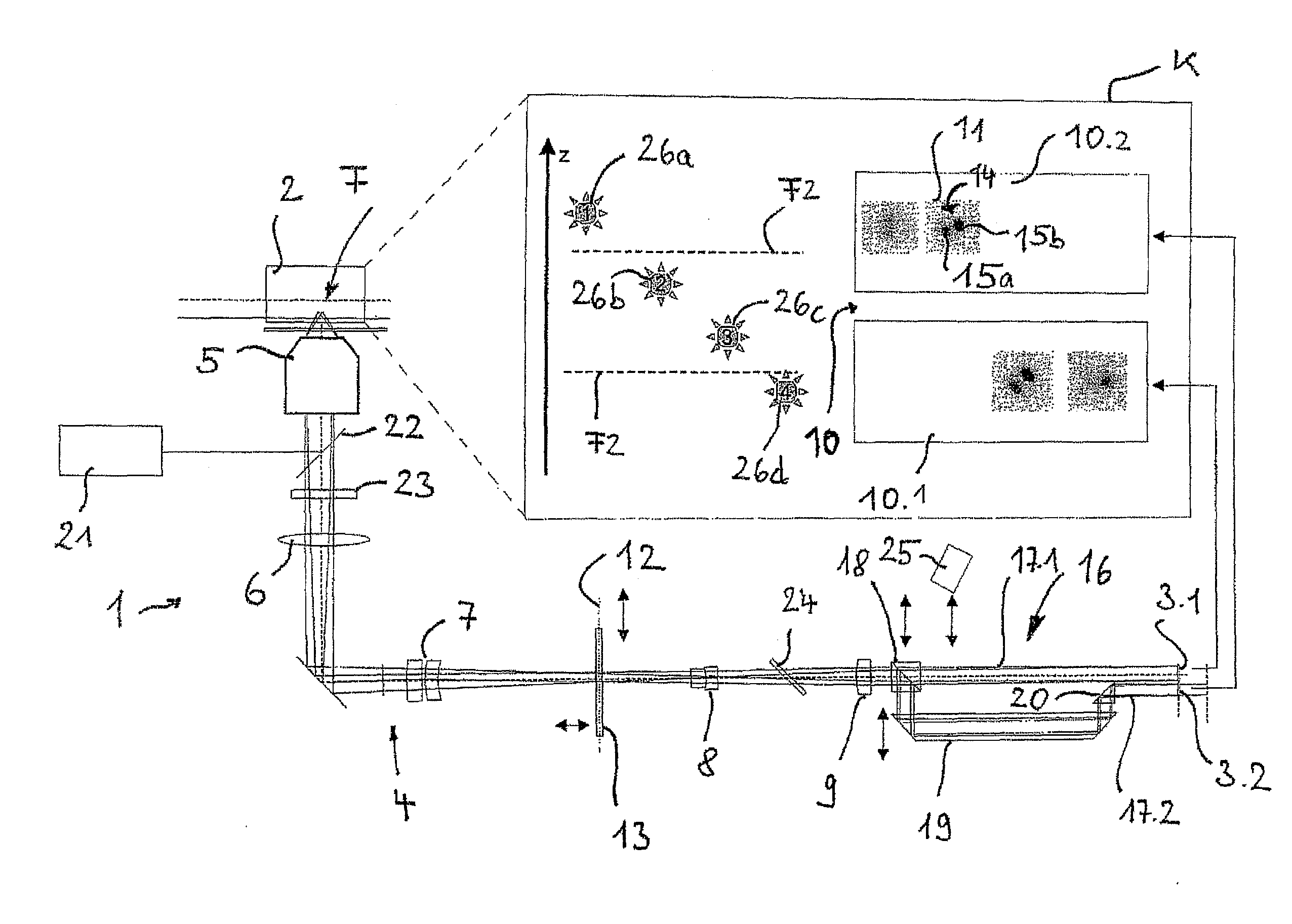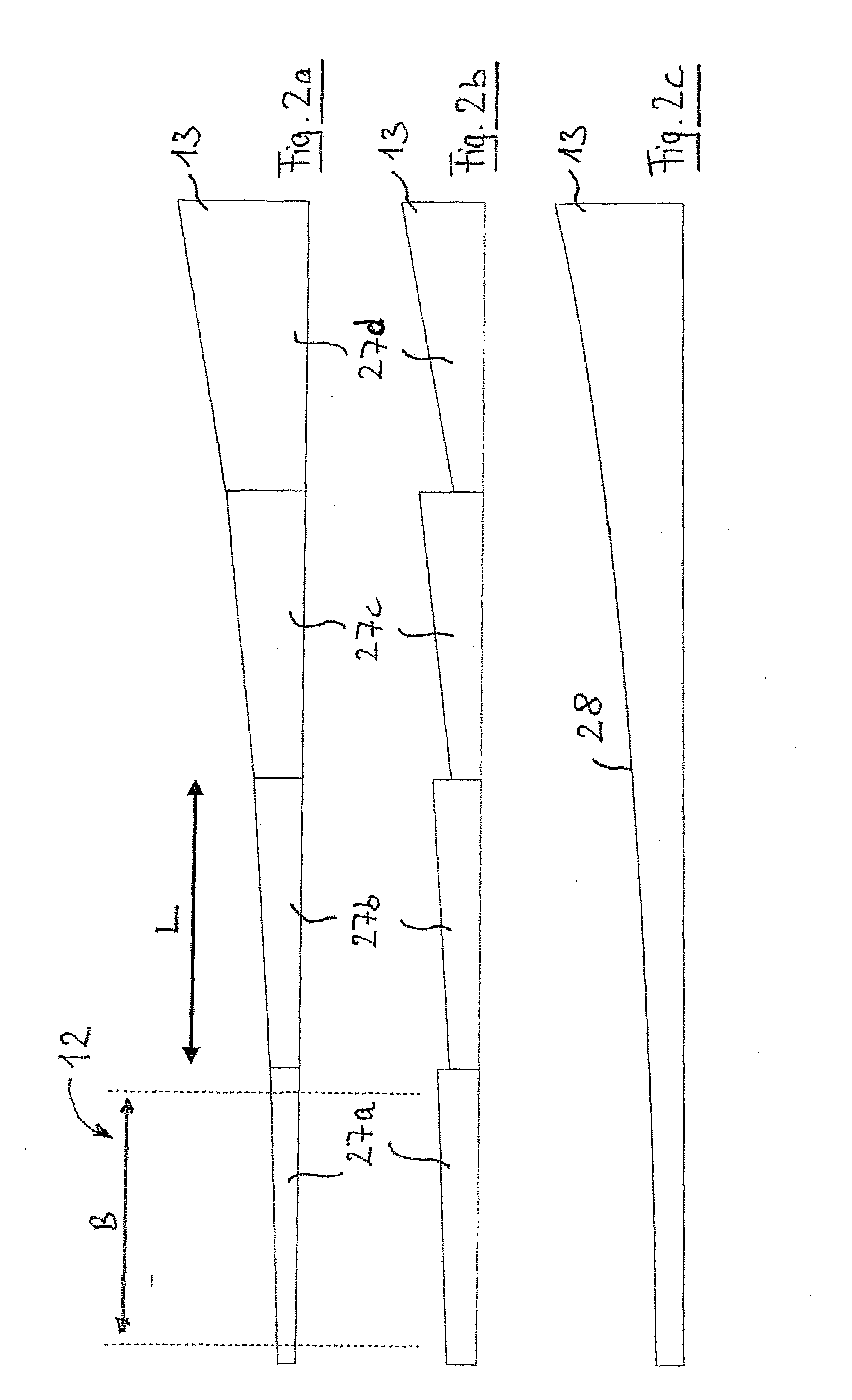Microscope and method for 3D high-resolution localization microscopy with an enlarged measurement region
a high-resolution localization and microscopy technology, applied in the direction of fluorescence/phosphorescence, instruments, polarising elements, etc., can solve the problems of affecting the image of affecting the resolution of the image, and causing the photons emitted by the radiating fluorescence marker to interfere with each other, so as to achieve no meaningful resolution
- Summary
- Abstract
- Description
- Claims
- Application Information
AI Technical Summary
Benefits of technology
Problems solved by technology
Method used
Image
Examples
Embodiment Construction
[0035]FIG. 1 shows a microscope 1 designed to image a specimen 2 by means of the PALM principle. The specimen 2 is imaged on two detectors 3.1, 3.2 by an imaging beam path 4. The imaging beam path 4 has an objective 5 as well as a tube lens 6, which through additional optics 7, 8, 9 project a region of the specimen 2 situated in a focal plane F onto the detectors 3.1, 3.2. The imaging beam path 4, as will be further explained below, has a different optical path lengths for the two detectors 3.1 and 3.2, so that the two detectors 3.1 and 3.2 are associated with different focal planes F. This will be further explained below. As a result, the two detectors 3.1 and 3.2 provide an individual image pair 10 consisting of two individual images 10.1 and 10.2. These are represented schematically in the box K. With the imaging layout described thus far, one would expect that a radiating fluorescence emitter in the specimen 2 appears as a circular spot in the individual image 10.1 or 10.2, whos...
PUM
 Login to View More
Login to View More Abstract
Description
Claims
Application Information
 Login to View More
Login to View More - R&D
- Intellectual Property
- Life Sciences
- Materials
- Tech Scout
- Unparalleled Data Quality
- Higher Quality Content
- 60% Fewer Hallucinations
Browse by: Latest US Patents, China's latest patents, Technical Efficacy Thesaurus, Application Domain, Technology Topic, Popular Technical Reports.
© 2025 PatSnap. All rights reserved.Legal|Privacy policy|Modern Slavery Act Transparency Statement|Sitemap|About US| Contact US: help@patsnap.com



